When it comes to weight management and healthy living, two names dominate the app stores — Noom and MyFitnessPal. Both promise to help you eat better, stay on track, and achieve your fitness goals. But they approach that goal in completely different ways: one focuses on behavioral psychology, while the other relies on data-driven tracking.
So which one’s better for you? Let’s break down every feature, cost, and experience side by side.
MyFitnessPal vs Noom TL;DR
- Noom uses psychology and coaching to help you build long-term healthy habits.
- MyFitnessPal focuses on precise tracking of calories, macros, and nutrients.
- If you want structured guidance and accountability, go with Noom.
- If you prefer flexibility, detailed analytics, and control, choose MyFitnessPal.
| Feature / Dimension | Noom | MyFitnessPal |
|---|---|---|
| App Philosophy / Focus | Behavior change, psychological support, habit building, mindful decisions rather than strict dieting | Tracking, data, flexibility, macro/micro insights, user control |
| Onboarding & Personalization | Questionnaire around habits, lifestyle, psychology; then custom plan + “coach + group” environment | Basic goal setup (weight, activity, target), then immediate calorie/macro targets; less deep behavioral profiling |
| Logging & Tracking | Meal logging, water, weight, steps; food entries classified via “green, yellow, red” system (based on calorie density) | Food logging (manual or barcode), exercise, weight, integration with devices; large food database (14+ million items) |
| Food Database & Barcode / Search | Moderate database size; barcode scanning support is less emphasized as Noom focuses more on food quality/color than sheer breadth | Very large database; barcode scanning widely supported; many user-submitted and brand entries |
| Nutrition / Macro / Micro Insights | Provides feedback, but less granular detail on micro-nutrients; emphasis on balance of food colors over precise vitamin/mineral data | Detailed macro breakdown (protein, carbs, fat) and, with Premium, deeper nutrient tracking (fiber, sugar, sodium, etc.) |
| Coaching, Community, Support | 1:1 coach messaging (in Premium), AI support (Welli), group coach, peer community, behavioral lessons, weekly check-ins | No built-in professional coaching; support through community forums, social/peer features; Premium users get priority support |
| Special / Add-on Features | Noom 360 Body Scan, Noom Vibe (habit tracker with “vibes” currency), Noom Mood, AI assistant, side-effect guides, etc. | In Premium: ad-free, “different goals by day,” custom macro by grams, food analysis, dashboard, export data, etc. |
| Device & App Integrations | Integrates with step trackers / mobile sensors (pedometer) and health platforms (Apple Health / Google Fit) to some exten | Strong integration ecosystem: Apple Health, Fitbit, Garmin, Samsung Health, etc. |
| Free / Freemium Access | Some free access (limited features) is available, but core behavioral modules & coaching require subscription. | Core logging, calorie tracking, basic insights are free; many advanced features are behind Premium / Premium+ tiers |
| Premium / Subscription Features | Premium includes direct messaging with 1:1 coach, full access to behavioral lessons, meal/exercise plans, AI support (Welli), etc. | Premium and Premium+ unlock ad-free experience, custom goals per day, macro by grams, food analysis, export data, priority support, etc. |
| Pricing Structure / Models | Paid subscription (varies by region and plan length). Noom sometimes offers trial period. | Freemium + Paid tiers. Premium pricing: ~$19.99/month or ~$79.99/year (depending on plan) |
| Strengths / What Users Praise | Guidance, habit-forming structure, psychological insights, accountability, motivational push | Large database, flexibility, integration, detailed analytics, ability to customize mapping of goals and metrics |
| Criticisms / Limitations | Less precision in nutrient data, some users find logging clicks cumbersome, coaching may vary, cost, occasional overly low calorie targets | Some features moved behind paywall (e.g. barcode scanner in past allegations), free version lacks advanced insights, inconsistent user-submitted food data accuracy |
Noom Overview
Noom is a weight-management and behavior-change app that blends psychology, education, and habit-tracking to help users build healthier relationships with food. Instead of giving you a strict diet, Noom teaches you how to understand your eating patterns, manage triggers, and make better long-term choices.
Launched in 2008 and now used by over 45 million people, Noom’s approach stands out because it focuses more on why you eat rather than just what you eat.
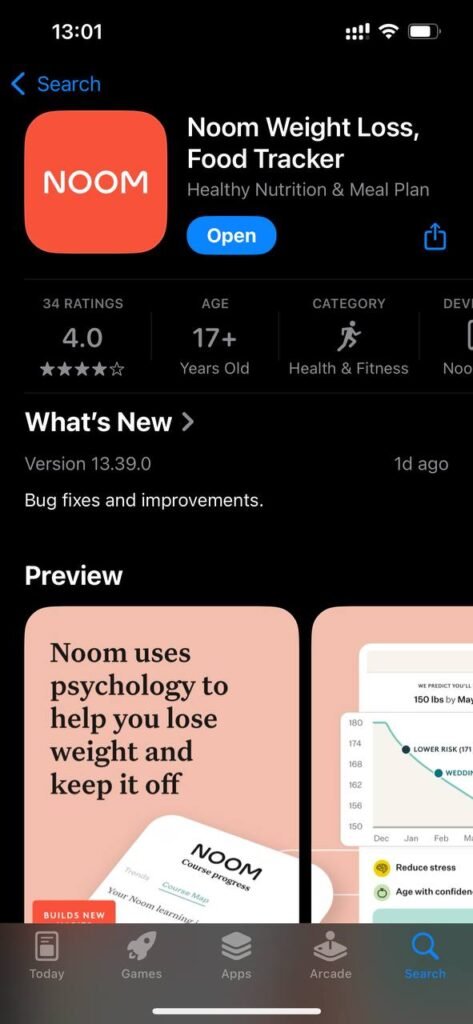
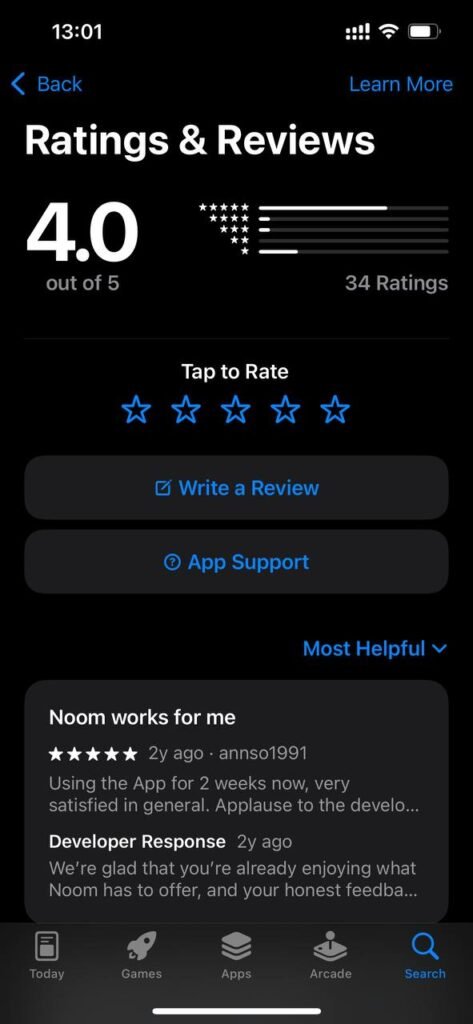
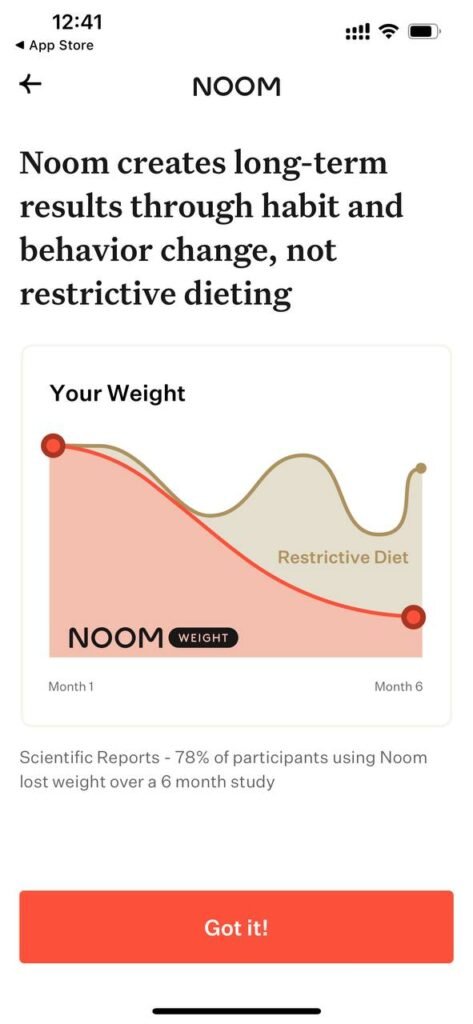
Core Philosophy
Noom is based on the principles of Cognitive Behavioral Therapy (CBT) — a psychological method proven to help people change their behaviors and thought patterns.
Each day, users complete short, science-backed lessons about:
- Emotional eating and mindfulness
- Setting realistic goals
- Managing stress and cravings
- Building sustainable habits
This makes Noom feel more like a digital coach than a simple calorie-tracking app.
Food Logging System
Instead of counting every gram or macro, Noom simplifies things with a color-coded food system:
🟢 Green foods: low-calorie, nutrient-dense (veggies, fruits, lean proteins)
🟡 Yellow foods: moderate calorie density (grains, dairy, starches)
🔴 Red foods: calorie-dense items (desserts, fried foods, processed snacks)
The goal isn’t to cut out red foods but to find balance. Noom teaches moderation by helping you see how different foods affect your energy and mood.
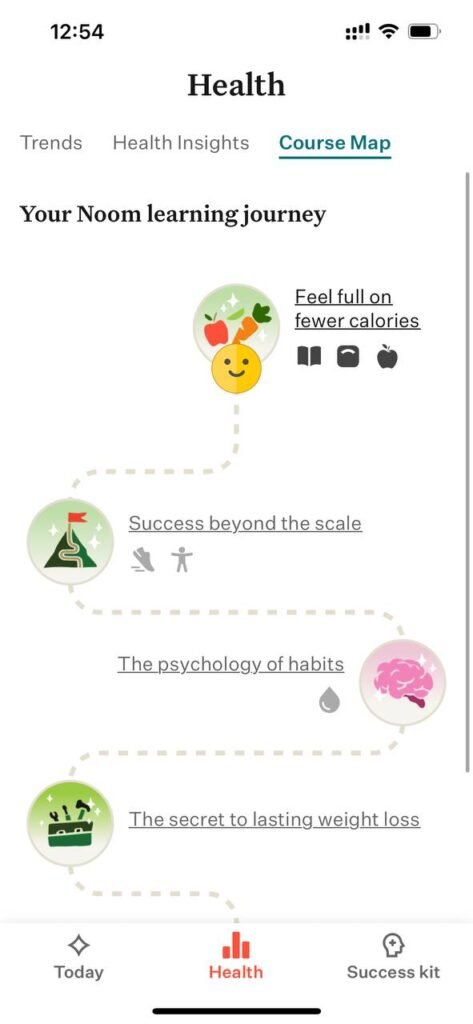
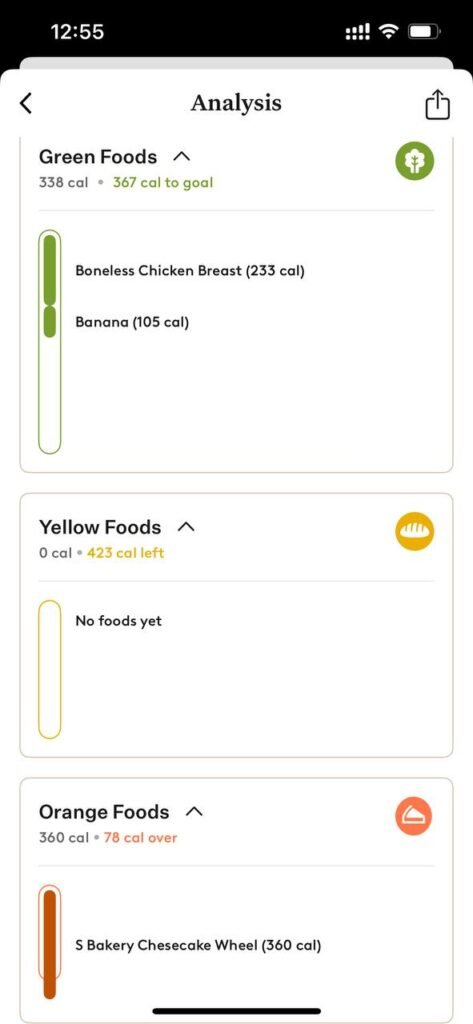
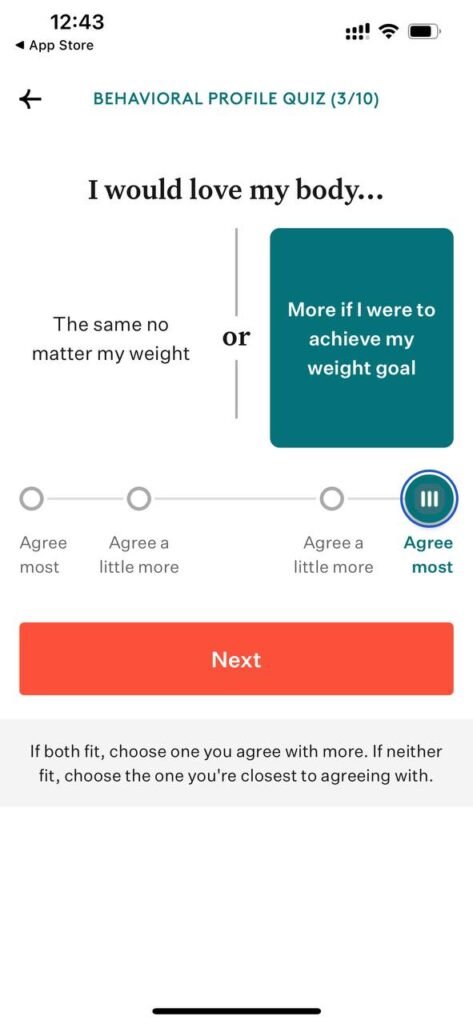
Features and Tools
- Daily psychology-based lessons
- Meal, exercise, and weight tracking
- Color-coded food database
- Step counter integration
- Progress charts and reflections
- 1:1 coach chat + group chat
- Optional AI assistant (Welli)
- Programs for both Weight Management and Mental Wellness (Noom Mood)
⚠️ Important: If you’d like to try the app yourself, Noom requires a subscription — but you get a 7-day free trial to explore all features. Just don’t forget to cancel your subscription INSIDE THE APP if you decide not to continue, as it renews automatically.
MyFitnessPal Overview
MyFitnessPal (MFP) is one of the world’s most popular nutrition and fitness tracking apps, used by more than 200 million people since its launch in 2005.
Unlike Noom, which focuses on psychology and coaching, MyFitnessPal is a data-driven tracking tool — giving users full control over calories, macronutrients, and exercise logging to manage their weight and performance goals.
It’s less about mindset and more about numbers, precision, and self-discipline — perfect for users who like to see measurable progress in real time.
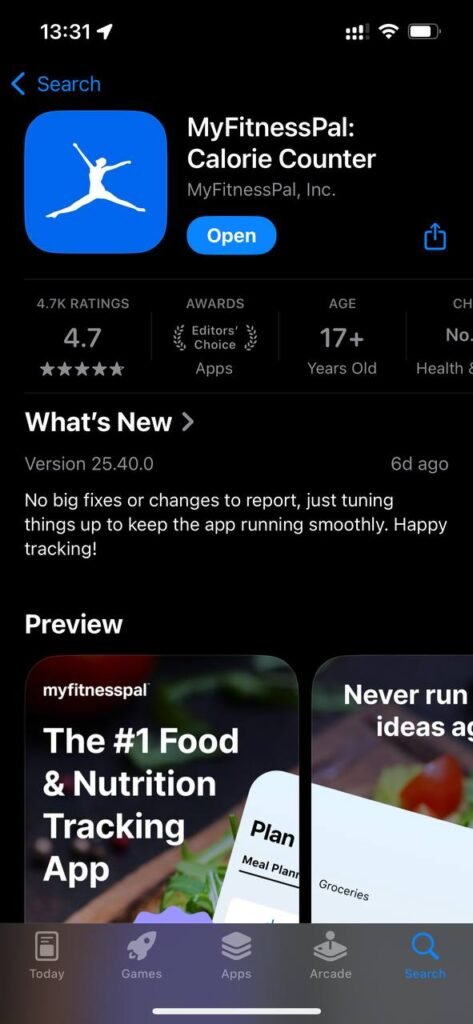
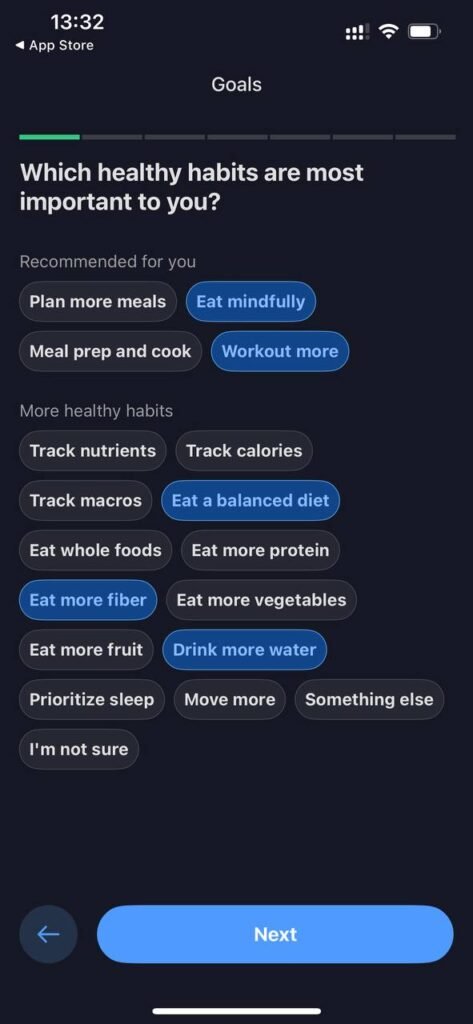
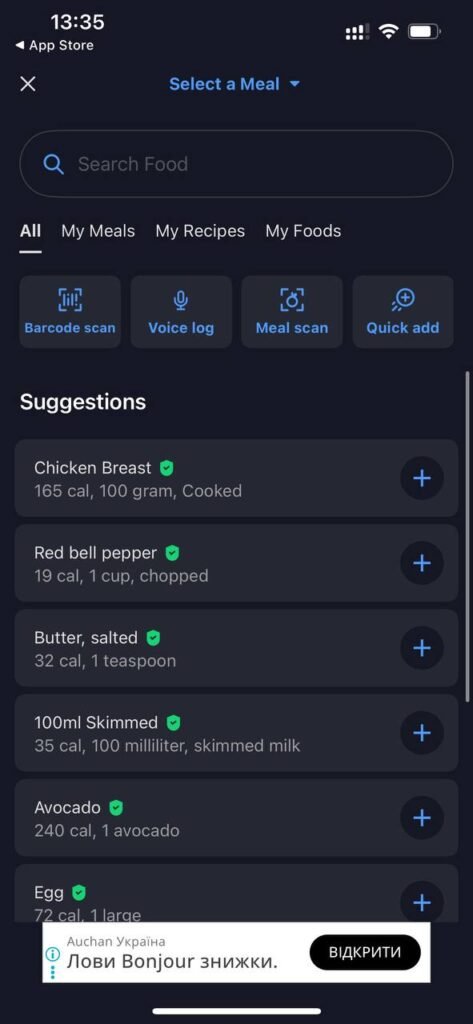
Core Philosophy
MyFitnessPal is built on the idea that “what gets tracked gets improved.”
By logging everything you eat, drink, and do, the app helps you stay aware of your daily calorie balance — making it easier to adjust your habits for weight loss, muscle gain, or maintenance.
Rather than giving you lessons or coaching, MyFitnessPal provides a comprehensive set of tools for calorie control and performance optimization.
Food Logging System
MyFitnessPal has one of the largest food databases in the world — over 14 million items — covering grocery products, restaurants, and recipes from nearly every country.
You can:
- Scan barcodes for instant logging
- Save favorite meals or recipes
- Add custom foods or import from websites
- View detailed nutrition info for every item
Its precision and speed make it ideal for people who love data and efficiency.
MyFitnessPal — Key Feature
- Massive food database (14M+ items) with barcode scanning.
- Quick meal logging, custom foods, and recipe builder.
- Tracks calories, macros, and key nutrients (fiber, sugar, sodium).
- Meal insights and custom macro goals in Premium.
- Personalized calorie and macro targets.
- Set goals for weight loss, maintenance, or gain.
- Custom macros by grams and different goals by day (Premium).
- Optional exercise calorie exclusion for stricter tracking.
- Log cardio and strength workouts manually or via wearables.
- Syncs with Fitbit, Garmin, Apple Health, and Strava.
- Tracks steps, workouts, and body measurements.
- Daily and weekly reports for calories and macros.
- Custom dashboard and nutrient-focused graphs (Premium).
- Data export for advanced progress tracking.
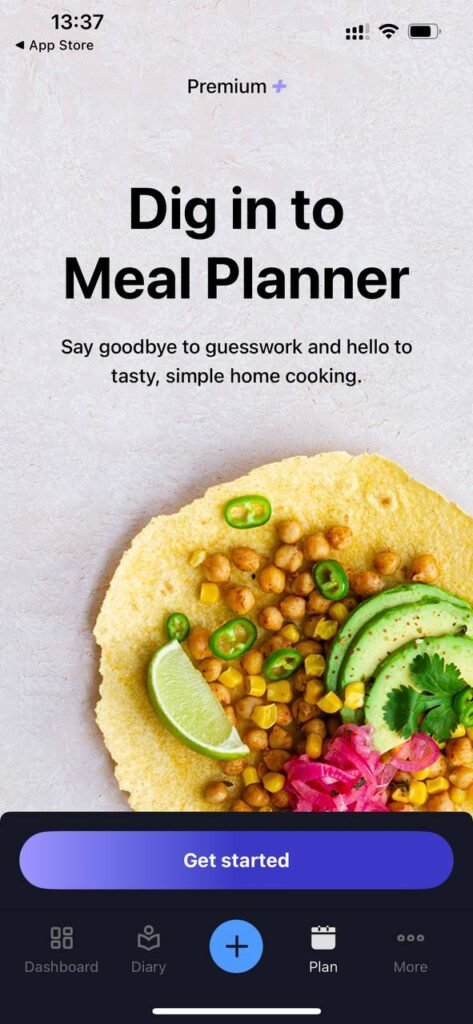
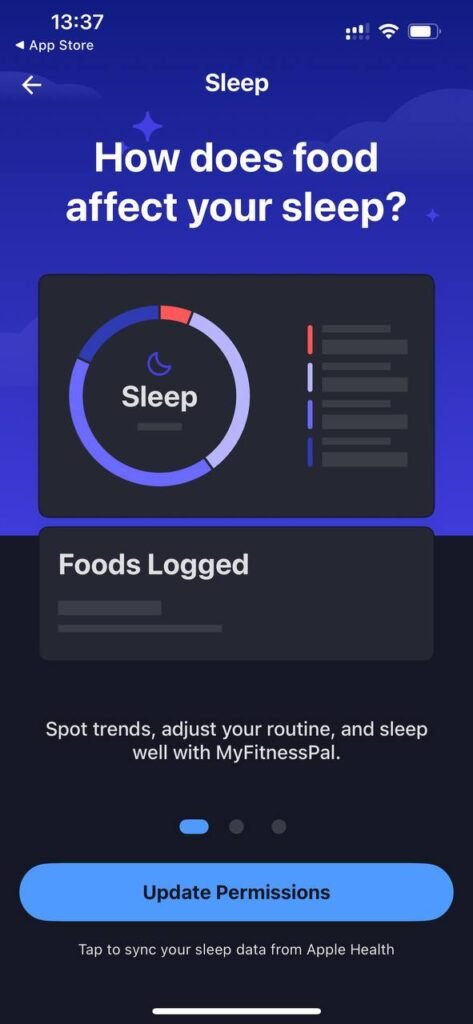
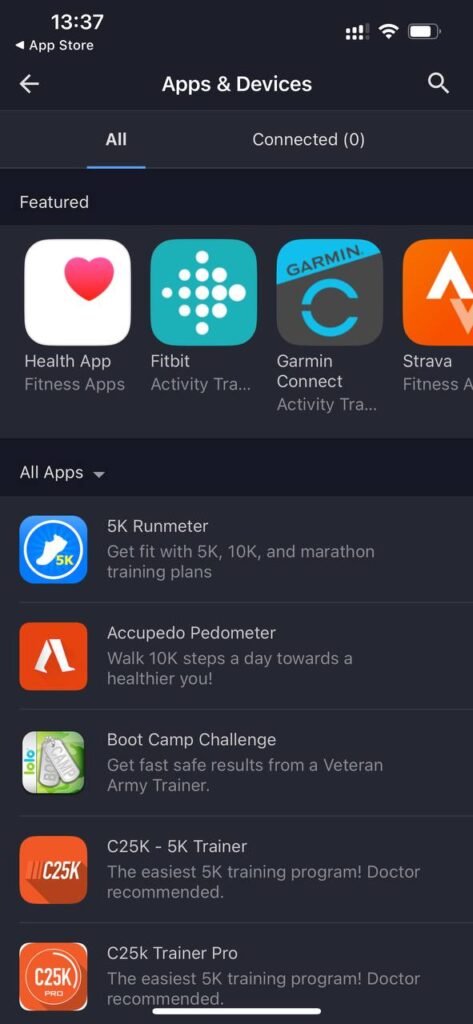
Noom vs MyFitnessPal: Our Experience
After trying both apps for a few weeks, we totally get why people swear by each of them. Noom feels like having a super supportive friend who also happens to be a psychology major — it helps you dig into why you eat the way you do and gently nudges you toward better habits. It’s calm, positive, and actually kind of fun to check in with. Also, Noom’s food-coloring system is super simple and surprisingly effective — the green, yellow, and red categories make it easy to see when your plate is balanced or when it’s time to dial things back. It turns mindful eating into something visual and easy to understand, even on busy days. MyFitnessPal, on the other hand, is all about the numbers — fast logging, endless food options, and satisfying charts that make progress feel tangible. It’s perfect if you love tracking and want full control. For us, the magic combo was using MyFitnessPal’s data-driven tools with Noom’s mindset lessons — together, they make healthy eating feel both smart and sustainable.
MyFitnessPal vs Noom: User Feedback
When it comes to popularity and user feedback, MyFitnessPal clearly leads the pack. It boasts over 100 million installs on Android compared to Noom’s 10 million+, putting MFP in a league of its own in terms of reach. MyFitnessPal also enjoys higher user ratings on Google Play (≈ 4.4★) and the App Store (≈ 4.7★), while Noom is a bit lower on Android (≈ 4.2★) though close on iOS. This difference suggests a broader satisfaction among Android users for MFP and highlights its robust footprint in the health app space.
Community & Support
When it comes to community and support, Noom takes a more personal route, while MyFitnessPal leans on its massive global network. Noom connects you with a real human coach and small peer groups, so it feels more intimate — like having a mini support circle that checks in and keeps you accountable. You can chat, set goals together, and get gentle motivation when you need it most. MyFitnessPal, in contrast, doesn’t have personal coaching, but its forums and challenges are huge. There’s always someone logging the same meals, sharing tips, or celebrating milestones, which gives it more of a “fitness social network” vibe. So if you like structured support, Noom’s your pick; if you prefer community energy and crowdsourced motivation, MyFitnessPal wins.
AI Integration
AI plays a surprisingly different role in these two apps. Noom recently introduced Welli, its built-in AI assistant that helps you stay on track with reminders, motivational tips, and quick answers about your goals. It’s designed to feel conversational and supportive — like a digital wellness buddy that’s available 24/7. MyFitnessPal, on the other hand, uses AI more subtly. It powers smart meal suggestions, automatic food recognition, and predictive logging to speed up tracking, but doesn’t yet offer a chat-style assistant. In short, Noom’s AI focuses on behavioral coaching, while MyFitnessPal’s AI leans toward data efficiency — both useful, just serving very different vibes.
Food Database & Logging Options
When it comes to food tracking, MyFitnessPal is the obvious powerhouse. Its database is huge — over 14 million foods from around the world — and includes everything from restaurant meals to local brands. You can scan barcodes, import recipes, or log entire meals in seconds, which makes it super easy to stay consistent. Noom, meanwhile, takes a more mindful approach. Its database is smaller, but every food is color-coded (green, yellow, or red) based on calorie density, helping you understand balance instead of just counting numbers. MyFitnessPal is all about speed and precision, while Noom focuses on awareness and education — so it really depends whether you want quick data or gentle guidance.
Noom vs MyFitnessPal: Device & App Integrations
If you’re the type who loves syncing everything — smartwatch, fitness tracker, and even your scale — MyFitnessPal will make your life easier. It connects with pretty much every major platform out there: Apple Health, Fitbit, Garmin, Strava, Samsung Health, and dozens more. Your steps, workouts, and calorie burns sync automatically, so your data always feels complete. Noom keeps things simpler. It integrates with Apple Health and Google Fit, which covers the basics like step count and activity tracking, but doesn’t go much further than that. In short: MyFitnessPal plays nicely with the whole fitness tech ecosystem, while Noom keeps it minimal and focused.
Which One to Choose
Choosing between Noom and MyFitnessPal really comes down to how you like to stay motivated and what kind of support helps you stick to your goals.
If you need structure, guidance, and accountability, Noom is the better fit. It feels like having a wellness coach in your pocket — helping you understand your habits, keep a positive mindset, and stay consistent without obsessing over numbers. It’s great for anyone who tends to lose motivation after a few weeks or wants to make deeper lifestyle changes instead of just tracking calories.
But if you’re more of a data-driven, independent type, MyFitnessPal might be your perfect match. It gives you full control over your nutrition and fitness data, offers endless food logging options, and connects with nearly every health device you can imagine. You’ll love it if you like setting your own rules, seeing progress in graphs, and fine-tuning every detail of your routine.
In short:
- Choose Noom if you want coaching, mindset work, and gentle guidance.
- Choose MyFitnessPal if you prefer numbers, analytics, and flexibility.
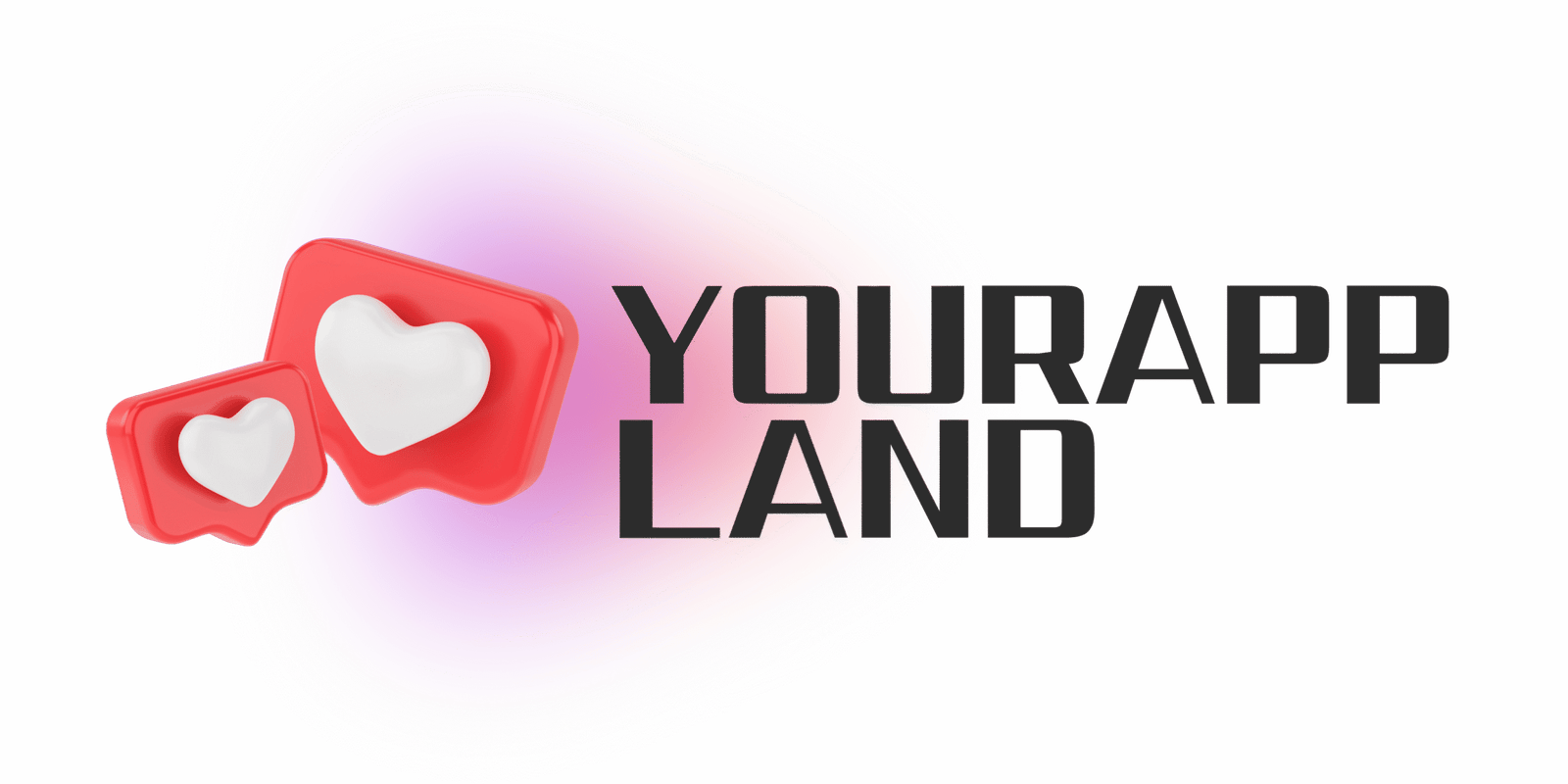
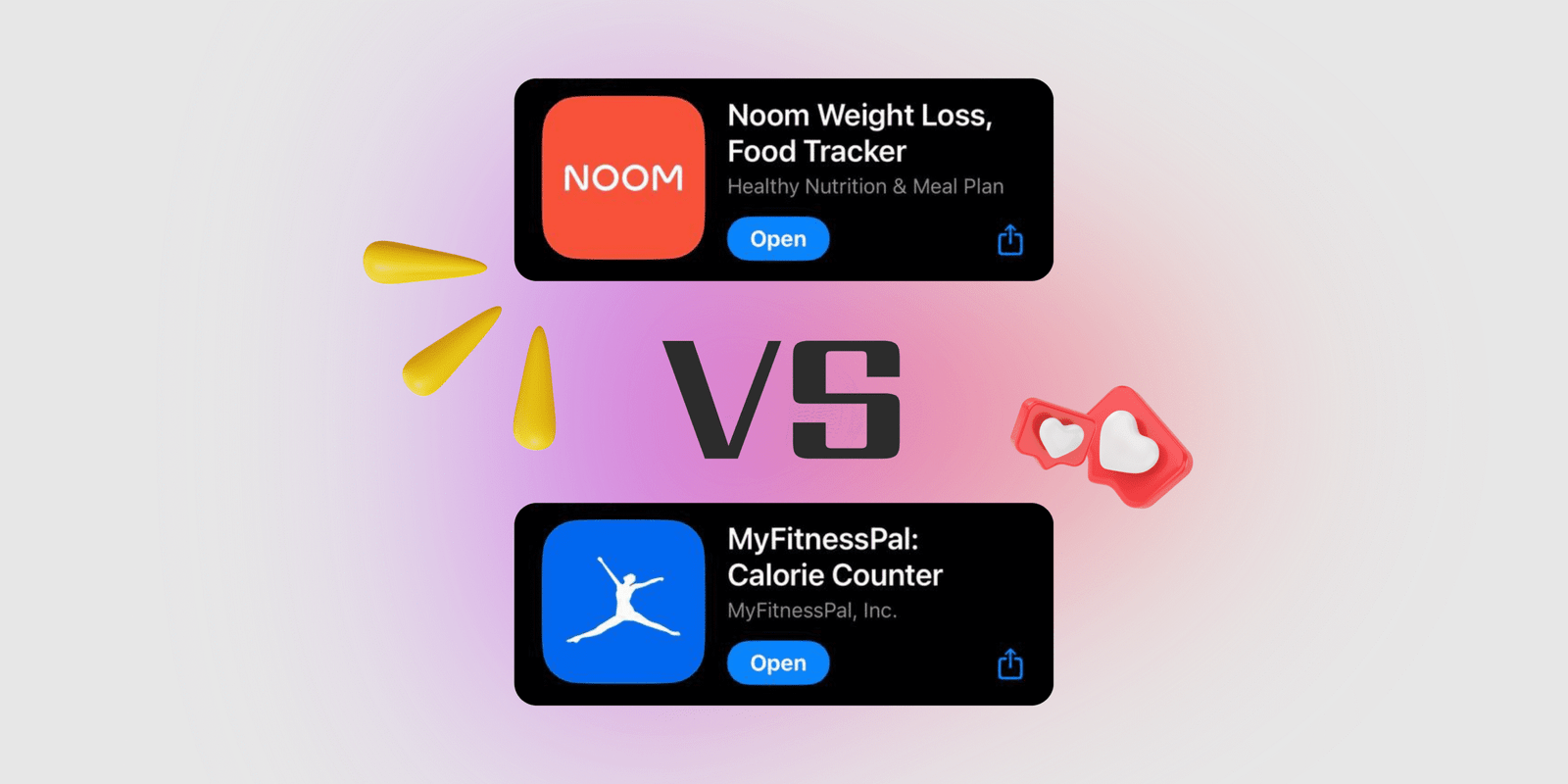
Leave a Reply